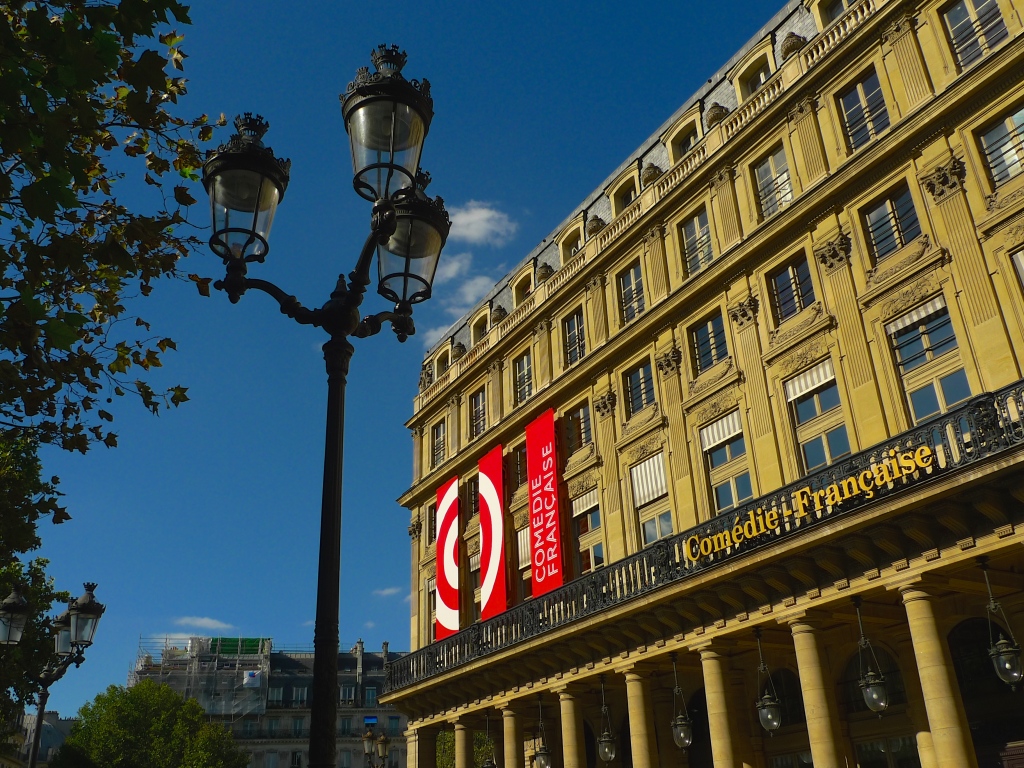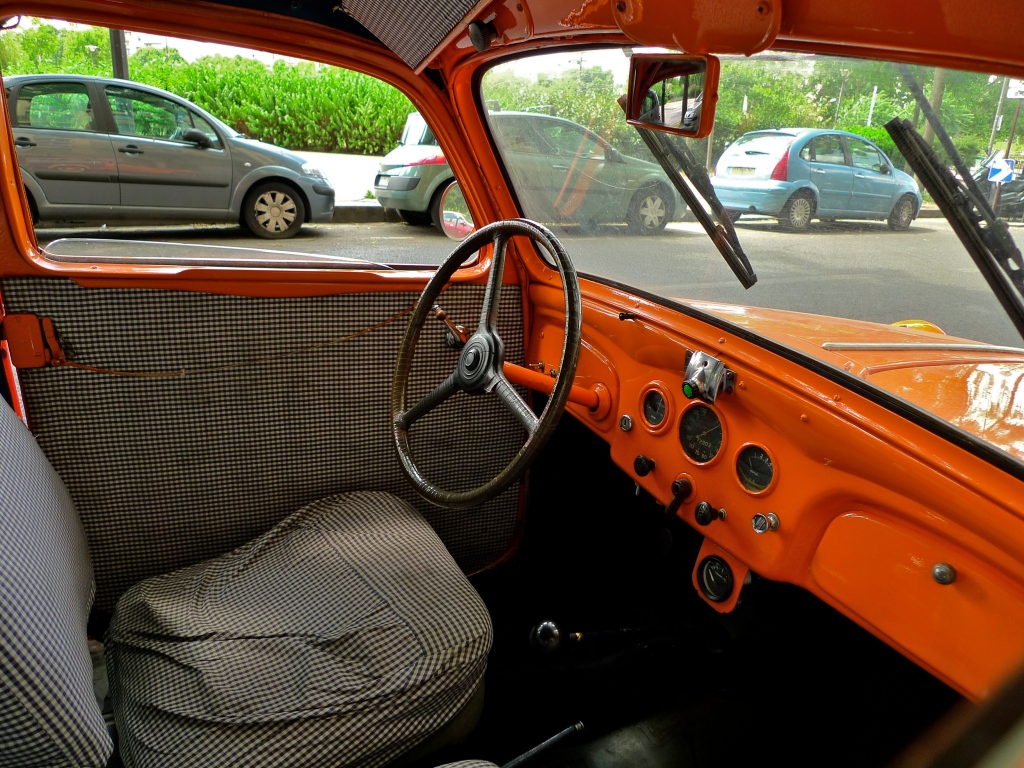Paris Journée sans Voitures
CAN YOU IMAGINE a city without traffic? Well, in Paris last Sunday we had a glimpse of what such a city might look and sound like.
In August 2014, an organisation called Paris sans Voitures, a citizen collective made up of scientists and high-profile individuals, residents of all ages, professionals, activists and dreamers, put forward a proposal to the Mayor of Paris, Anne Hidalgo, to reclaim Paris and liberate the streets. Their vision was for a car-free day; a day when private vehicles would be banned in Paris and public transport would be free.
Anne Hidalgo was impressed but the Paris police were more difficult to convince. Nevertheless, a decision was reached on 5th March this year that for one day Paris would experience ‘une journée sans voiture’ – a car free day.
The Mayor was not able to persuade the police that the car free zone should extend across the entire city so an accommodation was reached.
Click to enlarge
On Sunday 27th September, between 1100 and 1800, the 1st, 2nd, 3rd and 4th arrondissements – the heart of the city – were car free zones. Several areas away from the centre, including part of the quai on the Left Bank, most of the Champs-Élysées, the Bois de Boulogne, the Bois de Vincennes and the tourist area of Montmartre were also to be car free.
There were exceptions – buses, taxis and emergency vehicles were allowed.
I spend a large part of my life recording the street sounds of Paris and the sound of traffic is my constant companion so this ‘Journée Sans Voitures’ was an opportunity for me to capture an unusual sound tapestry of the city, one without the weft of constant traffic.
L’Avenue de l’Opéra on Sunday afternoon
On Sunday afternoon I walked along the Avenue de l’Opéra from Place de l’Opéra to Place Colette and, apart from occasional buses and taxis, the restriction on other motor vehicles seemed for the most part to be effective.
I chose to record the sounds of the Journée Sans Voitures from Place Colette, which stretches from la Comédie-Française théâtre to the Palais-Royal and le Conseil d’État.
I thought it would be particularly interesting to contrast the sounds in Place Colette on this unique day to those found in the same place on a normal working day.
Place Colette on a normal working day
Sounds in Place Colette on a normal working day:
On a normal working day Place Colette is a space shared between Parisians going about their daily business and tourists passing through. The sounds of passing traffic pervade the air all the time.
Place Colette: Journée sans Voitures
Sounds in Place Colette – ‘Journée Sans Voitures’:
On Sunday in Place Colette there were Parisians and tourists but the sound tapestry was very different. The absence of traffic highlighted sounds that are always there but seldom heard, the rustle of the leaves in the trees for example. The sounds of the people reclaiming the city took centre stage.
When you listen to these sounds, remember that they were recorded in exactly the same place as the working day sounds above.
One might conclude that the Journée sans Voitures was either an experiment worth trying or simply a wheeze by the city authorities to provide a late summer’s fun day out. But it’s worth remembering that for a few hours in March this year Paris gained the unwelcome accolade of being the most polluted city in the world.
Excessive vehicle emissions were at the root of the problem. These emissions, combined with sunshine, a drop in temperature and an absence of wind to disperse the pollutants, caused a stagnant cover of warm air to settle over Paris. A toxic haze enveloped the city obscuring some of its most well known landmarks. Schools were instructed to keep children in classrooms and limit sports activities and health warnings were issued to the elderly to avoid even moderate exercise.
Paris usually enjoys relatively clean air for a city its size so the bad press stung the city authorities.
Is it too fanciful to suggest that the Journée sans Voitures might be a signpost to the future – cities without noxious vehicle emissions, cleaner air and a much less polluted sonic environment?
Parisian Traffic – A Study in Sound
I AM A CITY DWELLER and so the sound of traffic is my constant companion. In a busy city like Paris there is no escape from it. Day and night the cacophony of traffic pervades the air enveloping one in a cloak of constant noise pollution.
The Mairie de Paris has produced a fascinating map of road traffic noise in the city and I’ve reproduced a page of it below.

If you want to explore the on-line version you can do so by clicking here where you can see the road traffic noise levels in each arrondissement measured in dB(A), an expression of the relative loudness of sounds in air as perceived by the human ear.
Academic studies have also been carried out to try to quantify the amount of traffic noise and it’s effect on our lives. I came across a study recently published in the International Journal of Health Geographics entitled ‘Transportation noise and annoyance related to road traffic in the French RECORD study’ which is worth a read.
Extract from: ‘Transportation noise and annoyance related to road traffic in the French RECORD study’: International Journal of Health Geographics
Although both the sound map of the traffic noise in Paris and the study from the International Journal of Health Geographics are interesting and certainly help to quantify the problem I’m not going to dwell on them here. Instead, I want to focus on traffic noise from my perspective as a sound recordist specialising in recording urban soundscapes and particularly the urban soundscape of Paris.
The conventional wisdom is that traffic noise is the enemy of the field recordist and I can attest to that. I’ve lost count of the number of recordings I’ve made that have been blighted by traffic noise. Unlike my wildlife sound recording friends who will often get up at an unearthly hour and travel for miles to find remote places free from the sound of traffic to hunt their quarry I don’t have that possibility. The sounds I hunt for are much closer to home, in the heart of the city and in the case of Paris, a city that is constantly awash with traffic.
Over the years I’ve wrestled with the problem of recording the Parisian soundscape while, if not eliminating, then minimising the effect of unwanted traffic noise but there has always been a problem in the back of my mind. Traffic noise IS part of the Parisian soundscape and while it might not always be an attractive part, it is an integral part of the warp and weft of the city’s sound tapestry.
So I’ve decided to stand this problem on its head and rather than seeking to eliminate or minimise traffic noise I’ve decided to feature it – but this of course requires a change in the way we think about traffic noise.
For me, noise is sound in the wrong place and usually in the wrong quantity. But what if we think not of traffic noise but of traffic sounds. What if we think less about traffic as noise pollution and more in terms of traffic as a sound tapestry in its own right. True, it won’t eliminate traffic as a major source of noise pollution blighting our environment but it might help us to come to terms with it a little better and it might even help us to find something engaging rather than something completely hostile. It might even become, if not a friend, then perhaps less of an enemy.
For the last few months I’ve been recording the sounds rather than the noise of traffic. I’ve been to the traffic hotspots in Paris such as the Champs Elysées, rue de Rivoli, Place de Clichy, Place de la Bastille, Place de la Chapelle as well as to other places less congested. I eschewed the Périphérique, the wall of traffic that surrounds Paris, on the basis that I wanted to record traffic that was actually moving which the traffic there seldom seems to do.
I don’t have a car and so I don’t contribute to the noise pollution caused by traffic – although I do use public transport extensively so maybe I do to some extent – but nevertheless, I tried to listen to the sounds of the traffic dispassionately, as a sound recordist recording yet another urban soundscape.
Parisian Traffic – A Study in Sound:
In this sound piece I’ve stitched together some of the traffic sounds that I’ve recorded. The piece begins with the cacophony of traffic, the dominating, harsh, discordant mixture of sounds that we think of as traffic noise. As the piece develops the sounds of the traffic become less harsh and more distinctive as individual vehicles emerge from the crowd and reclaim their identity. The sounds cease to shout at us and begin to speak in a clearer voice. Finally, pedestrians reclaim the streets although not entirely devoid of traffic but at least sharing them more equitably.
As someone who is passionate about sound I abhor the increasing noise pollution that blights our lives as much as anyone. Traffic noise makes up a large part of that noise pollution and it’s not going to disappear any time soon. At best it can be a nuisance and at worst it can be unbearable.
As a sound recordist capturing the Parisian soundscape I loathe the city’s incessant traffic noise but I wouldn’t be doing my job if I didn’t at least try to tease out some of its few redeeming features and embrace its more captivating sounds.



















